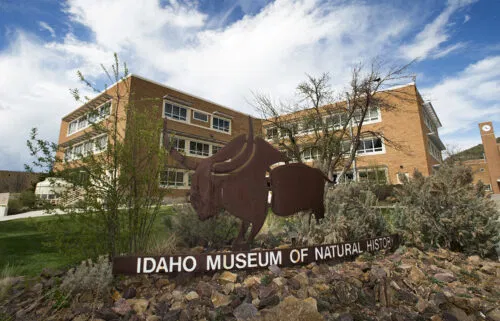ISU adds third high processing computer
POCATELLO, Idaho (KIFI) - A new high-performance computing (HPC) system or supercomputer is now online at Idaho State University.
Research Data Center staff recently flipped the switch on Ragnarok, the facility’s latest HPC system. Ragnarok boasts eight Nivida RTX 3090 graphics processing units. Graphics processing units are specialized computer processors used to speed up graphics rendering.
Comparing Ragnarok to the average consumer gaming laptop, Ragnarok has eight times the graphics processing power and is designed for a level of graphical computation that consumer computers lack.
“Researchers at Idaho State can use Ragnarok for many graphic-intensive processes like processing bare ground or tree canopy images collected using Lidar, data collected from drone flights, and more,” said Kindra Blair, Research Systems Administrator at Idaho State. “Future research could include working with neural networks and other machine learning algorithms.”
Ragnarok is one of four HPC systems available to researchers at Idaho State. It joins Minerve and Thorshammer; all housed on-campus in Pocatello.
Dustin McNulty, professor and chair of the department of physics, has used Minerve for particle and optical physics simulations. Using the data from the simulations has helped McNulty and his students develop new particle detector systems. The particle detectors have been used in nuclear physics experiments at ISU’s own Idaho Accelerator Center and around the world at the Thomas Jefferson National Accelerator Facility in Virginia, Stanford Linear Accelerator Center in California, and Mainzer Microtron facility in Germany.
“I use high-performance computing resources in nearly all aspects of my research,” McNulty said. “Whether we're designing a unique detector system or trying to understand a physical or natural process..the simulations provide us with a wealth of information, give more accurate predictions than traditional calculations, and really accelerate our whole research process.”
Meanwhile, Kathryn Turner, assistant professor in biological sciences, and her students are using Thorshammer to help them analyze how populations of a plant species are related and how populations can spread across the landscape.
Thorshammer is enabling them to develop a reference genome - a DNA sequence database that is representative of the set of genes in one idealized individual organism of a species - for the invasive weed, blue mustard.
In addition to invasive weeds, Turner is also doing similar studies of important native species such as big sagebrush.
“Thorshammer and other high-performance computing resources are essential for the type of genomic analyses we perform,” Turner said.
“The datasets used in these analyses are often hundreds of gigabytes in size and far, far too large to run on desktop computers - they would either crash or take months to run. If we didn't have Thorshammer, we would have to find these types of resources somewhere else, which would most likely mean paying for it from scarce grant resources and competing for access to the computers.”
For more details on Idaho State University’s Research Data Center, click HERE.






